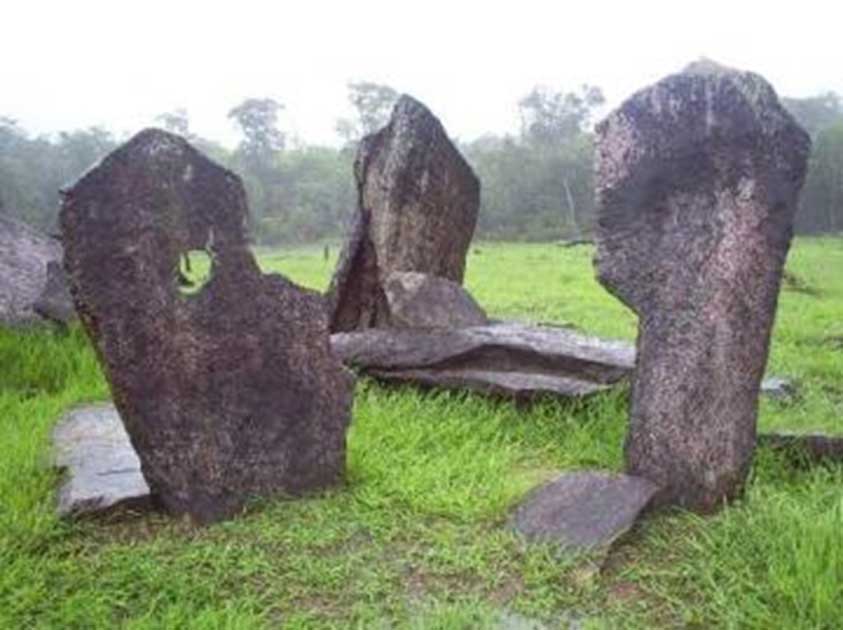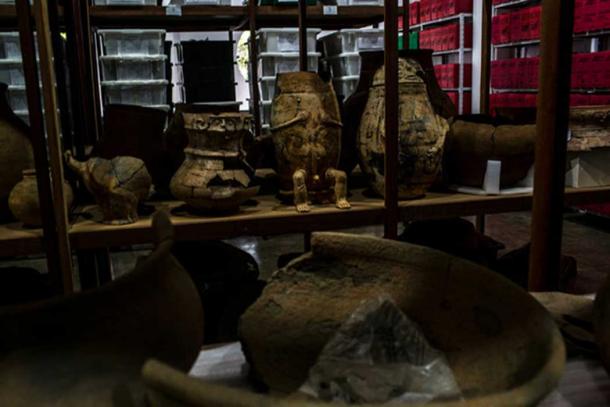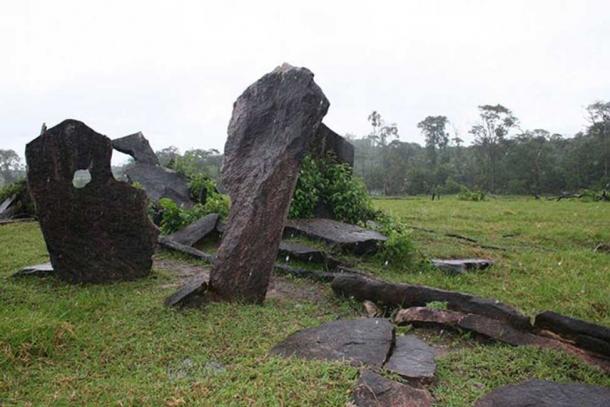Megaliths Discovered in Brazil May Be an Amazonian Stonehenge Created By an Advanced Ancient Civilization
A group of scientists and researchers have found evidence that a highly advanced ancient civilization could have existed in Brazil. Almost 500 years before the European colonization of the Americas began, the natives that inhabited the Brazilian Amazon were possibly creating an impressive arrangement of immense towering granite blocks.

Experts Try to Explain the Purpose of the Amazon’s “Stonehenge”
Scientists today speculate that these massive stones – which some people say resemble Stonehenge – were also an ancient astronomical observatory. The structure consisted of 27 blocks of granite, each up to 4 meters (13.12 ft.) tall, standing upright in a circle measuring over 30 (98.43 ft.) meters in diameter. In other words, almost a thousand years ago an ancient civilization of native peoples was flourishing in the area.
According to The New York Times, detailed radiocarbon tests and site measurements during the winter solstice shed light on the ancient civilizations that inhabited the Amazon. From the new evidence, archaeologists have concluded that the indigenous peoples who lived in the area had developed a more advanced civilization than most Western observers previously thought.
- Did the Portuguese Have Secret Knowledge about Brazil Before the Treaty of Tordesillas?
- Evidence of Gruesome 9,500-Year-Old Funerary Rites Found in Brazil

One of the large stones at the Rego Grande archaeological site in Brazil. (Leandroisola /CC BY SA 4.0)
These megaliths are joined by other recent archaeological discoveries in Brazil— including giant land carvings and remains of fortified settlements. Altogether these new findings are challenging the common perception that the Amazon was relatively untouched in the past by humans except for small, nomadic tribes.
As Mariana Cabral, an archaeologist at the Federal University of Minas Gerais, who (along with her archaeologist husband) has studied the Rego Grande site for the last decade, told The New York Times, “We’re starting to piece together the puzzle of the Amazon Basin’s human history, and what we’re finding in Amapá is absolutely fascinating,” She added that the other less elaborate megalithic sites found near the area could have served as markers for hunters or fishermen.

Calçoene pottery at the Amapá State Scientific and Technological Research Institute in Macapá, Brazil. (Dado Galdieri /The New York Times)
More Evidence is needed
However, there’s a significant number of scientists and archaeologists who claim that more information and evidence will be needed about Rego Grande to lift it into the realm of prehistoric places clearly conceived for astronomical observations. Jarita Holbrook, a scholar of physics and cultural astronomy at the University of the Western Cape in South Africa, explained why more evidence and new findings about Rego Grande’s characteristics are necessary, “We’ve seen a lot of similar claims, but it takes more than a circle of standing stones to get to a Stonehenge.”
- Message from Outer Space? The Mysterious Indecipherable Script of the Inga Stone
- Discovery of ancient stone tools in Brazil challenges belief about human arrival in the Americas
Further, John McKim Malville, a solar physicist at the University of Colorado, points out how the stones might not have been used exclusively for astronomical functions, but also for religious ceremonies and rituals, “The stones of Rego Grande are quite extraordinary and in their irregularity may have their own unique meaning, different from other megalithic sites around the world,” he said, speculating that Rego Grande might reflect the significance of animism (the attribution of a soul to entities in nature and even inanimate objects) in Amazonian cultures.
It’s also important to note that since the day archaeologists began excavations at the Amazonian Stonehenge in 2005, they have discovered hand-made ceramic burial urns, which possibly means that part of the area could have served as a cemetery at some point. Also, the stones appear to have been placed in the light of the Sun’s path in the winter solstice – when the star is at its lowest point, something that implies that the site could have also been used as a place of worship instead of an astronomical observatory. As Dr. Malville put it, “We can only speculate (for now) what its stones mean.”

Two of the site’s megaltiths. (Ancient-Code)
Top Image: Some of the large stones found at the Rego Grande site in the Amazon region of Brazil. Source: Yurileveratto/CC BY SA 3.0
By Theodoros Karasavvas
Related Post
A shocking documentary proves that mermaids do exist
SHOCKING Revelation: Thuya, Mother of Queen Tiye, Was the Grandmother of Akhenaten and Tutankhamun—What Ancient Egyptian Secrets Did She Leave Behind?
Breaking News: Astonishing Discoveries at Karahan Tepe Confirm an Extraterrestrial Civilization is Hiding on Earth, and NO ONE Knows!
Breaking News: Researchers FINALLY Discover U.S. Navy Flight 19 After 75 Years Lost in the Bermuda Triangle!
NASA’s Secret Investigation: Uncovering the Astonishing Mystery of the UFO Crash on the Mountain!
Explosive UFO Docs LEAKED: Startling Proof That Aliens Ruled Ancient Egypt!